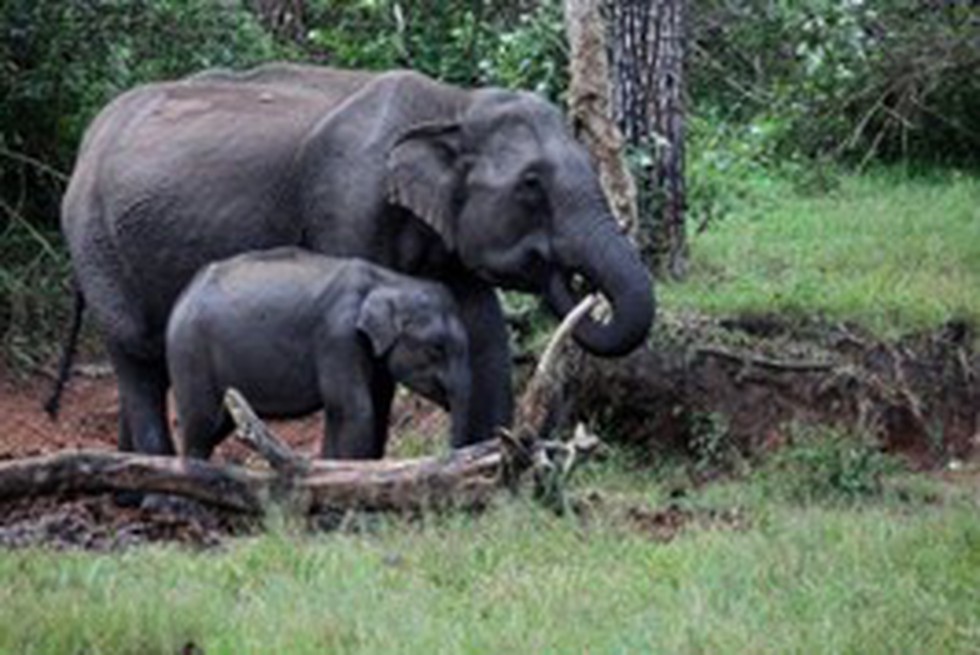
Nugu Wildlife Sanctuary

24.11.2023
Nugu Wildlife Sanctuary , Daily Current Affairs , RACE IAS : Best IAS Coaching in Lucknow
|
For Prelims: About Nugu Wildlife Sanctuary,Flora and Fauna of Nugu Wildlife Sanctuary, For Mains paper: Nilgiri Biosphere Reserve,National Tiger Conservation Authority |
Why in the news?
The National Tiger Conservation Authority (NTCA) recently recommended to the authorities that the Nugu Wildlife Sanctuary abutting the Bandipur Tiger Reserve be declared a core critical tiger habitat.
About Nugu Wildlife Sanctuary:
- It is situated north of Bandipur National Park in Mysore District, Karnataka.
- It covers about 30 sq km, and the northern part of the sanctuary is occupied by the Nugu Reservoir. It is built across the Nugu River, a tributary of the Cauvery.
- In 1974, Nugu was declared a Wildlife Sanctuary, and later, in year 2003-2004, the area of Nugu Wildlife Sanctuary was added to the Nilgiri Biosphere Reserve.
- Rainfall: The area receives rainfall from both southwest and northeast monsoons. The average amount of rainfall received in this area is 1000 mm.
- Vegetation: Most of the vegetation in the forests is dry, deciduous and interspersed with patches of plantations.
Flora and Fauna of Nugu Wildlife Sanctuary
- The flora of the Nugu Wildlife Sanctuary is similar to that of the Bandipur National Park.
- The forests comprise of southern mixed deciduous trees and dry deciduous scrubs. Some of the trees species found in this region include Dipterocarpus indicus, Calophyllum tomentosum and Hopea parviflora.
- Other species of trees that are dominant in this forest canopy include medicinal and commercially important tree species like Emblica officinalis, Santalum album, Albizia spp., and Dendrocalamus strictus.
- Nugu Wildlife Sanctuary has a vast list of fauna with a wildlife population that includes elephant, wild boar, jungle cat, tiger, leopard, bonnet macaque, small Indian civet, back nappe hare, along-with reptiles like the marsh crocodile, monitor lizard, cobra, rat snake, etc.
- The area is also rich in avifauna with birds like peafowl, India rind dove, Grey Jungle Fowl, Brahminy kite, Grey headed fish eagle, etc.
Nilgiri Biosphere Reserve
- The name ‘Nilgiris’ with literary meaning ‘blue mountains’ has originated from the blue flower clad mountains of the Nilgiris plateau within the State of Tamil Nadu.
- It was the first biosphere reserve in India established in the year 1986.
- It is an International Biosphere Reserve in the Western Ghats and Nilgiri Hills ranges of South India.
- It was included in UNESCO World network of Biosphere Reserves in the year 2000.
- The reserve encompasses a total of 5,520 km² in the states of Karnataka (1,527 km²), Kerala (1,455 km²), and Tamil Nadu (2,537 km²).
- The Nilgiri Sub-Cluster is a part of the Western Ghats, which was declared a World Heritage Site by UNESCO in 2012.
- Nilgiri Biosphere Reserve exemplifies the tropical forest biome, and falls within the Western Ghats system which portray the confluence of Afro-tropical and Indo-Malayan biotic zones of the world.
- Biogeographically, Western Ghats is the most important region and one of the noted ‘Hot Spots’ for speciation in the tropics.
- It is represented by unique and threatened ecosystems including a host of forest systems, ranging from seasonal rain forests in the low hills, tropical montane forests and grasslands in the higher reaches and moist deciduous to scrub through dry-deciduous towards the plains in the Eastern end.
- The region is noted for its rich biodiversity.
- It houses about 3500 species of flowering plants, out of which 1500 are endemic to the Western Ghats.
- The fauna consists of over 100 species of mammals, 550 species of birds, 30 species of reptiles and amphibians, 300 species of butterflies, and a large number of invertebrates and many more species that await discovery by scientists.
National Tiger Conservation Authority:
- It is a statutory body under the Union Ministry of Environment, Forest and Climate change.
- It was provided statutory status by the Wild Life (Protection) Amendment Act, 2006 which had amended Wild Life (Protection) Act, 1972.
- It addresses the administrative as well as ecological concerns for conserving tigers, by providing a statutory basis for protection of tiger reserves.
- It also provides strengthened institutional mechanisms for the protection of ecologically sensitive areas and endangered species.
- It ensures enforcing of guidelines for tiger conservation and monitoring compliance of the same.
- It also places motivated and trained officers having a good track record as Field Directors of tiger reserves.
Source:The Hindu